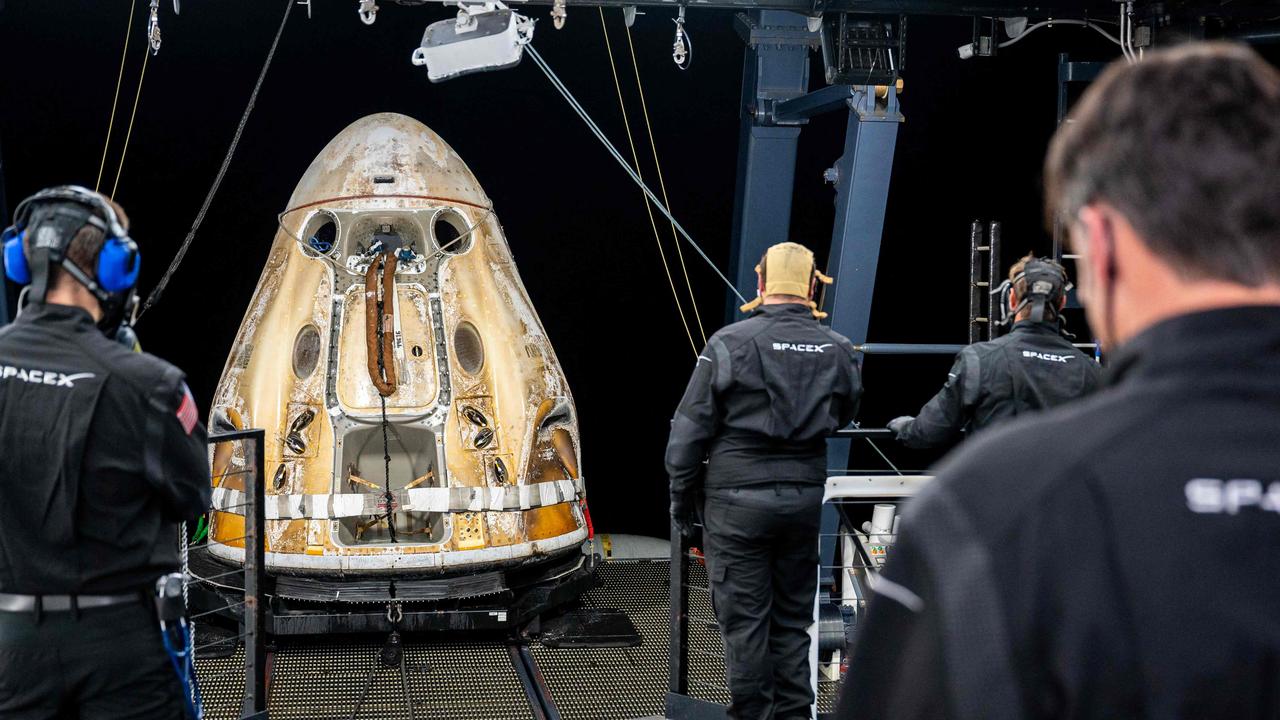NASA’s SpaceX Crew-5 return safely to Earth after five months in International Space Station
After a successful space mission working on what has been hailed another “giant leap for all of humanity”, NASA’s SpaceX Crew-5 returned safely to Earth

READING LEVEL – GREEN
After spending five months in space working on what has been hailed* another “giant leap for all of humanity”, NASA’s SpaceX Crew-5 splashed down safely to Earth on Saturday.
The SpaceX Dragon Endurance capsule carried Koichi Wakata of Japan, Russian cosmonaut* Anna Kikina, and NASA astronauts Nicole Mann and Josh Cassada, who spent 157 days orbiting Earth aboard the International Space Station (ISS)*.
On their return, NASA Administrator Bill Nelson said: “Welcome home, Crew-5! This international crew has been conducting critical science experiments and technology demonstrations on the ISS that will help prepare us for future deep space missions and pave the way for our return to the Moon.
“Each advancement these explorers make is not an achievement for one, but a giant leap for all of humanity*.”

The crew members had travelled an incredible 107,146,150km during their mission and completed 2512 orbits around our planet, before splashing down safely off the coast of Tampa in Florida.
According to NASA, they also tested hydroponic* and aeroponic* techniques to grow plants without using soil, released Uganda and Zimbabwe’s first satellites, studied how liquids move in a container in simulated* lunar* gravity to generate data to improve Moon rover designs, and tested a system to produce some nutrients* from yoghurt, kefir, and a yeast-based drink. The astronauts even grew dwarf tomatoes in space.
This was the first spaceflight for Mann, Cassada, and Kikina, while Wakata has logged an impressive 505 days in space over his five flights.

This was the second flight of the Dragon spacecraft, named Endurance by the Crew-3 astronauts on its maiden voyage*.
Before its next flight, Endurance will return to SpaceX’s Dragon Lair in Florida for inspection and processing of data.
The Crew-5 flight is part of NASA’s Commercial Crew Program, which aims to provide safe, reliable, and cost-effective transportation to and from the ISS and low-Earth orbit*.
Among other things, this program is helping NASA prepare for human exploration of the Moon and Mars.
GLOSSARY
- hailed: to greet with enthusiastic approval
- cosmonaut: a Russian space traveller
- International Space Station (ISS): a multi-nation construction project that is the largest single structure humans ever put into space and is a “co-operative program” between Europe, the United States, Russia, Canada and Japan
- humanity: all human beings collectively; the human race; humankind
- hydroponic: the process of growing plants in sand, gravel, or liquid
- aeroponic: growing plants in the air without soil
- simulated: made to look like or have the features of something else
- lunar: of, relating to, or resembling the moon
- nutrients: substances that promote growth, provide energy and maintains life of plants and animals
- maiden voyage: the first journey of a new ship
- low-Earth orbit: the path of an object around Earth that is relatively close to the planet’s surface
EXTRA READING
Lift-off! NASA launches spaceship to the moon
Unexplained ‘smudges’ found on Saturn’s rings
QUICK QUIZ
- How many orbits around Earth did the Crew-5 complete during their time in space?
- Where did the SpaceX Dragon Endurance spacecraft splash down safely?
- Name the astronaut who has logged 505 days in space over five flights.
LISTEN TO THIS STORY
CLASSROOM ACTIVITIES
Splashdown
After spending five months in space, then splashing down in a capsule in the ocean, NASA and the astronauts would want a full medical check.

Watch some of the official NASA vision of the splashdown, write down the three most interesting points you observed;
1.
2.
3.
NASA’s SpaceX Crew-5 Mission Splashdown (Official NASA Broadcast)
Time: allow 50 minutes to complete this activity
Curriculum Links: English, Health and Physical education, Science, Personal and social, Critical and creative thinking.
2. Extension
What are some of the medical checks they might undertake to check the astronaut’s health after returning from space;
How might it feel returning to normal life after living on the International Space Station for five months?
Time: allow 20 minutes to complete this activity
Curriculum Links: English, Health and Physical education, Science, Personal and social, Critical and creative thinking.
VCOP ACTIVITY
Read this!
A headline on an article – or a title on your text – should capture the attention of the audience, telling them to read this now. So choosing the perfect words for a headline or title is very important.
Create three new headlines for the events that took place in this article. Remember, what you write and how you write it will set the pace for the whole text, so make sure it matches.
Read out your headlines to a partner and discuss what the article will be about based on the headline you created. Discuss the tone and mood you set in just your few, short words. Does it do the article justice? Will it capture the audience’s attention the way you hoped? Would you want to read more?
Consider how a headline or title is similar to using short, sharp sentences throughout your text. They can be just as important as complex ones. Go through the last text you wrote and highlight any short, sharp sentences that capture the audience.

